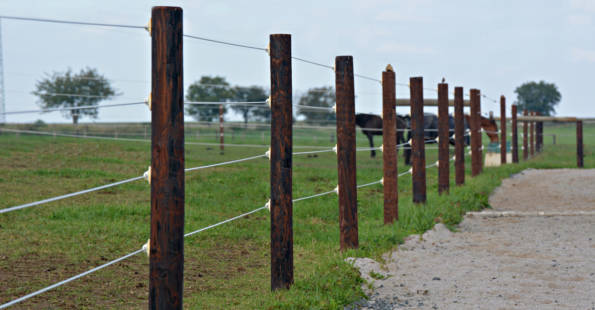Tuesday 23rd April, 2019

After a long winter in the stables, our horses are looking forward to their new found freedom in the fields. If you are thinking of increasing your horses turn out time then it’s time to pay attention to your fencing. Livery yard owners bear the responsibility for maintaining borders. However, it goes without saying horse owners must examine their fencing regularly to keep their equines safe. Here are our top tips when reviewing or replacing your current facility.
If you are relying on hedgerows then it may be time to consider investing in a more robust solution to your borders. There are several types of fencing for horses. Post and rail is usually considered the optimum choice due to its strength and durability, however it is the most expensive and labour intensive. Sheep fencing with a single strand of plain wire is a popular option as it is relatively easy to install and maintain. Avoid barbed wire at all costs, and if present, consider replacing as soon as possible. Electric tape is another type that can be useful in horses that ‘test’ fences, however they must be kept very taught and high.
Horses are of great personal value, not to mention financial investment. Perimeter checks should be carried out regularly to ensure your equines can not escape or become entangled or injured by broken fencing. You will need to walk the entire length of your field fencing to thoroughly inspect hedgerows and borders. This also gives you an ideal opportunity to check the field shelters and scout out any ragwort or other plants that are poisonous to horses. If the grazing stretches over a large area, it is best to do this as a yard and take a section each.
While checking your boundaries, it is with checking your field shelters too. Doubling as stables for many horses, these structures need to be up to task; sturdy, weatherproof and large enough to house several horses. If your provision is found wanting, then maybe it is time to replace it with a bespoke mobile field shelter that better suits your needs.
Bear in mind the height of the horses in your field when reviewing fencing options. If you have very small ponies then some post and rail may not be suitable unless there are three horizontal rails. Also, if you have horses that windsuck, you may wish to consider electric tape or sheep wire rather than traditional post and rail. This will keep them contained without giving them leverage on which to bite down.